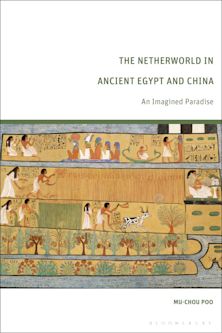- Home
- ACADEMIC
- Archaeology
- Egyptology
- Local Elites and Central Power in Egypt during the New Kingdom
Local Elites and Central Power in Egypt during the New Kingdom
Payment for this pre-order will be taken when the item becomes available
You must sign in to add this item to your wishlist. Please sign in or create an account
Description
This book explores the administration and social organisation of ancient Egypt during the New Kingdom, the age of empire, through the lives and careers of the highest classes of Egyptian society. Based on analysis and interpretation of a wide range of hieratic and hieroglyphic texts (from administrative documents and accounts, to biographies and literature), as well as iconographic and archaeological evidence (reliefs, statues and steles), it compares the transmission of power and the relevance of social provenance during the New Kingdom to other periods of ancient Egyptian history and examines the changing relationship between central power and periphery in the empire.
Both texts and figural sources are set in their historical contexts, with the aim of encouraging readers to deepen their understanding of some less-studied aspects of New Kingdom society, such as state control and the recruitment or enrolment of the elite classes. This detailed but straightforward approach will be of use to both scholars and students of Egyptology and Egyptian archaeology, and to those engaged in comparative studies of ancient history, society and culture.
Table of Contents
Brief Chronology of the New Kingdom
Abbreviations and Symbols
1. Selection Procedures and Identification of the Elite Groups
1.1. A Theoretical Discussion about the Elite
1.2. The Meaning of the Term 'Elite' in New Kingdom Egypt
1.3. Titles and Offices as Elite Status Symbols
2. Society and Administration during the 18th Dynasty
2.1. The Soldiers
2.2. The Officials
2.3. The Priesthood
3. The State Control on the Local Elites
3.1. Relationships between the Core of the State and the Court Dignitaries: Some Practical Cases
3.2. Life in the Central Court and Life in the Periphery
3.3. New Military Acquisitions and the Mechanism of Governance
4. Social Organization and Elites in the Deir el-Medina Microcosm
4.1. The Scribes
4.2. The Foremen
4.3. The Architects
4.4. Self-Presentation of the Elites in Deir el-Medina
4.5. Ancestor Worship and Religious Cults
4.6. Elites, Workmen and Divine Justice
5. Economic Crisis and Elites under the Ramessides
5.1. Self-Presentation of the Officials in the Ramesside Texts
5.2. Soldiers, Officials and Priests: A New Iconography
5.3. Attempting an Interpretation
6. Aspects of Elites and Feminine Power in the New Kingdom
6.1. Royal Court and Noble Women
6.2. Feminine Priests and Temple Employees
6.3. The 'God's Wife of Amon': Privileges and Prestige
7. Relationships between Local Elites and the Pharaoh: Imitation and Interpretation
Final Remarks: Hypothesis and Open Questions
Glossary
Suggested Reading
Bibliography
Index
Product details

| Published | Jan 09 2026 |
|---|---|
| Format | Ebook (PDF) |
| Edition | 1st |
| Extent | 224 |
| ISBN | 9781350343177 |
| Imprint | Bloomsbury Academic |
| Illustrations | 30 bw illus |
| Series | Bloomsbury Egyptology |
| Publisher | Bloomsbury Publishing |
































